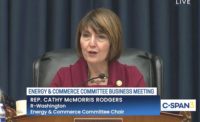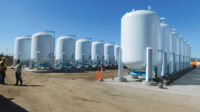The new International Energy Conservation Code (IECC), expected to be ready for adoption later this year, provides both residential and commercial builders more flexibility in making their projects more energy efficient and for the first time includes provisions related to electric vehicles, as well as optional paths to reach net zero energy consumption.
IECC is the model code that local governments use to develop their own building requirements and is updated every three years. Members of the International Code Council, primarily local and state government and building officials, voted on the 2021 update in November, and preliminary results were posted in December.
The 2021 IECC is expected to be more robust compared to its previous two iterations, which lagged behind the American Society of Heating, Refrigerating and Air-Conditioning Engineers (ASHRAE) 90.1 model code in reducing energy costs.
Christopher Perry, research manager for American Council for an Energy-Efficient Economy’s buildings program, says the 2021 IECC is “back on track” to be on par with ASHRAE’s 90.1 and is estimated to provide 10% or more in annual energy savings for residential and commercial buildings that use it. The U.S. Dept. of Energy will release its final savings analysis of the 2021 IECC later this year.
The 2021 code provides builders more flexibility to choose options that will work on specific projects based on their particular design, building type and location. Perry says the 2018 IECC did provide some flexibility for commercial projects, but the 2021 options are more extensive for commercial buildings and have been expanded to residential projects as well. These changes should lead to reduced energy consumption while providing builders the flexibility to choose options that work best for each individual project, he says.
The proposals related to electrical vehicles require new commercial buildings to set aside a portion of parking spaces for EVs and to including the necessary supporting electrical infrastructure for the EVs.
Additionally, the 2021 IECC includes two new appendices that provide pathways for states and cities to adopt net zero energy performance requirements. The appendices describe energy codes for both residential and commercial buildings that would produce as much energy as they consume each year through a mix of energy efficient improvements and renewable energy options such as solar rooftop panels.
Ralph DiNola, CEO of the New Building Institute, said in a statement that the new proposals show that “cities and states, which are voting on the IECC, want advanced energy efficiency. We are encouraged by the progress and especially the adopted zero energy appendices that allow jurisdictions to go even further than what the IECC calls for in residential and commercial projects.”
David Cohan, director of technology and policy analysis at the Institute for Market Transformation, says that the more robust the model code, the greater its impact will be when implemented. At a time when cities and states are seeking to reduce their carbon footprints, the expected 10% annual energy savings in buildings is “a very big deal. We’re very happy about that,” he says.
The general public will have 30 days to challenge the results once the International Code Council board of directors approves the proposals in coming weeks. The final 2021 code is expected to be published and ready for adoption by Oct. 1.






Post a comment to this article
Report Abusive Comment